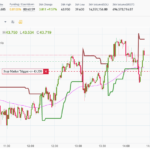Keynes’ great value lies in removing the old fallacy that prices are directly determined by the quantity of money. His theory of money and prices brings forth the truth that prices are determined mainly by the cost of production.
Keynes disagrees with the old analysis which establishes a direct causal relationship between the quantity of money and the level of prices. Keynes believes that changes in the quantity of money do not affect the price level (value of money) directly but indirectly through other elements like the level of investment, the rate of interest, output, income, and employment. The early impact of the changes in the total quantity of money falls on the rate of interest rather than on prices.

The Keynesian reformulated quantity theory of money is based on the following assumptions:
- All unemployed factors are homogeneous, perfectly divisible and interchangeable.
- All factors of production are in perfectly elastic supply so long as there is any unemployment.
- There are constant returns to scale so that prices do not rise or fall as output increases.
- Effective demand and quantity of money change in the same proportion so long as there are any unemployed resources.
Given these assumptions, the Keynesian chain of causation between changes in the quantity of money and in prices is an indirect one through the rate of interest. Its first impact is on the rate of interest which tends to fall when the quantity of money is increased. A fall in the rate of interest will increase the volume of investment.
Keynes’s reformulated quantity theory of money discards the old view that the relationship between the quantity of money and prices is direct and proportional, compared to the traditional approach. Instead, he establishes an indirect and non-proportional relationship between the quantity of money and prices.
In establishing such association, Keynes brought about an evolution from a purely monetary theory of prices to a monetary theory of output and employment. He incorporates monetary theory with value theory. He integrates monetary theory with value theory and also with the theory of output and employment through the rate of interest.
In fact, the integration between monetary theory and value theory is done through the theory of output in which the rate of interest plays the crucial role. When the quantity of money increases the rate of interest falls which increases the volume of investment and aggregate demand thereby raising output and employment. In this way, monetary theory is integrated with the theory of output and employment.
As output and employment increase they further raise the demand for factors of production. Consequently, certain bottlenecks appear which raise the marginal cost including money wage rates. Thus prices start rising.
Monetary theory is integrated with value theory in this way. The Keynesian theory is, therefore, superior to the traditional quantity theory of money because it does not keep the real and monetary sectors of the economy into two separate compartments with ‘no doors or windows between the theory of value and the theory of money and prices.’
Further, the Keynesian theory is superior to the traditional quantity theory of money in that it emphasizes important policy implications. The traditional theory believes that every raise in the quantity of money leads to inflation.
Keynes, on the other hand, establishes that so long as there is unemployment, the rise in prices is gradual and there is no danger of inflation. It is only when the economy reaches the level of full employment that the rise in prices is inflationary with every increase in the quantity of money. Thus Keynes approach has the virtue of emphasizing that the objectives of full employment and price stability may be intrinsically incompatible.






